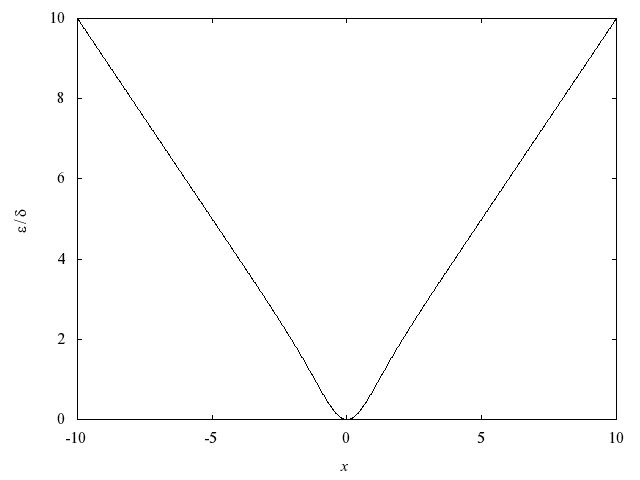s10ac returns the value of the hyperbolic cosine, .
 Syntax
Syntax
| C# |
|---|
public static double s10ac( double x, out int ifail ) |
| Visual Basic |
|---|
Public Shared Function s10ac ( _ x As Double, _ <OutAttribute> ByRef ifail As Integer _ ) As Double |
| Visual C++ |
|---|
public: static double s10ac( double x, [OutAttribute] int% ifail ) |
| F# |
|---|
static member s10ac : x : float * ifail : int byref -> float |
Parameters
- x
- Type: System..::..DoubleOn entry: the argument of the function.
- ifail
- Type: System..::..Int32%On exit: unless the method detects an error or a warning has been flagged (see [Error Indicators and Warnings]).
Return Value
s10ac returns the value of the hyperbolic cosine, .
 Description
Description
s10ac calculates an approximate value for the hyperbolic cosine, .
For .
For , the method fails owing to danger of setting overflow in calculating . The result returned for such calls is , i.e., it returns the result for the nearest valid argument. The value of machine-dependent constant may be given in the Users' Note for your implementation.
 References
References
Abramowitz M and Stegun I A (1972) Handbook of Mathematical Functions (3rd Edition) Dover Publications
 Error Indicators and Warnings
Error Indicators and Warnings
Errors or warnings detected by the method:
- The method has been called with an argument too large in absolute magnitude. There is a danger of overflow. The result returned is the value of at the nearest valid argument.
 Accuracy
Accuracy
If and are the relative errors in the argument and result, respectively, then in principle
That is, the relative error in the argument, , is amplified by a factor, at least . The equality should hold if is greater than the machine precision ( is due to data errors etc.) but if is simply a result of round-off in the machine representation of then it is possible that an extra figure may be lost in internal calculation round-off.
It should be noted that near where this amplification factor tends to zero the accuracy will be limited eventually by the machine precision. Also for
where is the absolute error in the argument .
 Parallelism and Performance
Parallelism and Performance
None.
 Further Comments
Further Comments
None.
 Example
Example
This example reads values of the argument from a file, evaluates the function at each value of and prints the results.
Example program (C#): s10ace.cs
